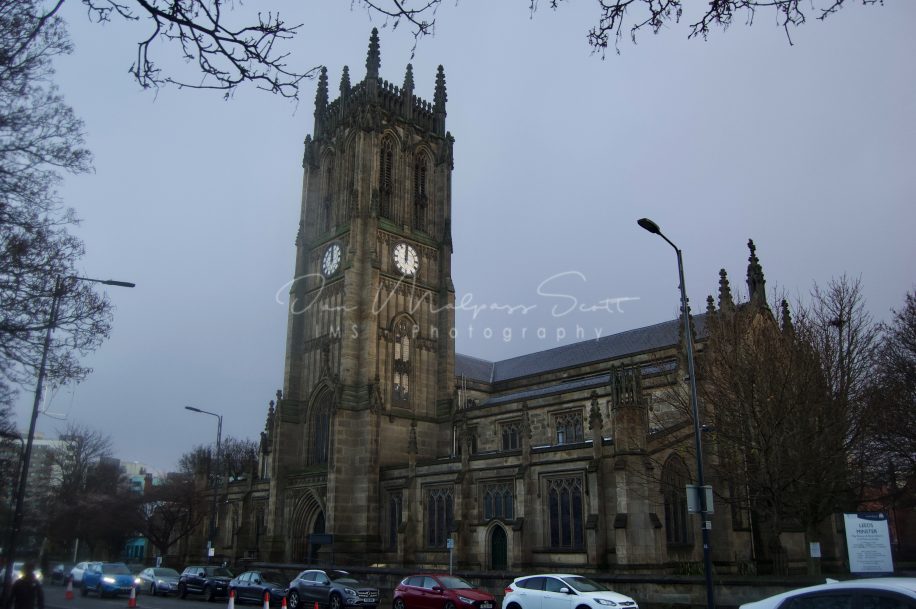![]()
Leeds Minster, Leeds, West Yorkshire.
Leeds Minster, or the Minster and Parish Church of Saint Peter-at-Leeds (formerly Leeds Parish Church) is the minster church of Leeds, West Yorkshire, England. It stands on the site of the oldest church in the city and is of architectural and liturgical significance. A church is recorded on the site as early as the 7th century, although the present structure is a Gothic Revival one, designed by Robert Dennis Chantrell and completed in 1841. It is dedicated to Saint Peter and was the Parish Church of Leeds before receiving the honorific title of “Minster” in 2012. It has been designated a Grade I listed building by Historic England.
A church at Ledes is mentioned in the Domesday Book of 1086, although it is likely that there had been a church on the same site for much longer, as evidenced by the fragments of Anglo-Scandinavian stone crosses (known as the Leeds Cross) found on the site during the construction of the current church. The church was rebuilt twice, after a fire in the 14th century, and again in the 19th century. Walter Farquhar Hook, Vicar of Leeds from 1837 until preferment as Dean of Chichester in 1859 was responsible for the construction of the present building, and of the revitalisation of the Anglican church throughout Leeds as a whole. The architect was Robert Dennis Chantrell.
It was originally intended only to remodel the church in order to provide space for a larger congregation. In November 1837 a scheme was approved under which the tower would have been moved from the crossing to the north side, the chancel widened to the same breadth as the nave, and the north aisle roof raised. When work began, however, it was discovered that much of the structure was in a perilous condition, and it was decided to replace the church completely. The new building was the largest new church in England built since Sir Christopher Wren’s St Paul’s Cathedral erected after the Great Fire of London and consecrated in 1707. The new parish church was rebuilt by voluntary contributions from the townspeople at a cost of over £29,000 and consecrated on 2 September 1841. Florence Nightingale and Dr Edward Bouverie Pusey were among the congregation and Dr Samuel Sebastian Wesley played the organ.
The east end was altered between 1870 and 1880.
The parish church became Leeds Minster in a ceremony on Sunday 2 September 2012, on the 171st anniversary of the consecration of the building. Leeds is one of three minster churches in the county of West Yorkshire, the other two being Dewsbury Minster and Halifax Minster; there are two cathedrals in the county, Bradford Cathedral and Wakefield Cathedral, and Ripon Cathedral, in North Yorkshire, is in the Anglican Diocese of Leeds.


